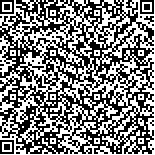| 本文已被:浏览 665次 下载 407次 |

码上扫一扫! |
| 藏东类乌齐-左贡成矿带构造演化与成矿作用 |
| 刘俊,李文昌,周清,王保弟,巴桑多吉,杨富成,杨后斌 |
|
|
(1.中国地质调查局成都地质调查中心, 四川 成都 610081;
2. 中国地质大学(北京)地球科学与资源学院, 北京 100083;
3. 中国自然资源航空物探遥感中心, 北京 100083;
4. 西藏自治区地质矿产勘查开发局第六地质大队, 西藏 拉萨 850000;
5. 云南省地质矿产勘查院, 云南 昆明 650051) |
|
| 摘要: |
| 藏东类乌齐-左贡成矿带(简称类-左带)是三江特提斯成矿域内一条重要的成矿带,其整体的研究较为薄弱、零散。本文基于最新的研究成果,按照成矿时代、地质背景、成矿作用及成矿元素组合将带内矿床划分为了6个成矿系列,包括:(1)印支期晶质石墨矿系列;(2)印支期蛇绿岩相关风化淋滤型菱镁矿系列;(3)印支期沉积-改造型Fe-Cu多金属系列;(4)燕山期与中酸性岩浆岩相关的W-Sn-Mo-Cu多金属系列;(5)燕山期热液脉型Pb-Zn多金属系列;(6)喜山期MVT型Pb-Zn多金属系列。针对每一个成矿系列,作者选取了典型矿床对其成矿地质特征进行了简要论述,并对其成因机制进行了重点剖析。此外,作者深入探讨了类-左带内区域构造演化与成矿作用之间的关系,指出各类矿床在带内大量发育是古、中、新特提斯构造长期演化的结果。本项研究有助于深入认识类-左带内的成矿作用与成矿规律,并对区内未来的找矿勘查工作具有重要的参考价值。 |
| 关键词: 成矿系列 构造演化与成矿 类乌齐-左贡成矿带 藏东三江地区 |
| DOI:10.19826/j.cnki.1009-3850.2022.01004 |
| 附件 |
| 投稿时间:2021-11-12修订日期:2021-12-09 |
| 基金项目:国家自然科学基金重大研究计划(92055314);云南省科学技术奖-杰出贡献奖项目(2017001);四川省"天府万人计划"杰出科学家项目(川万人第023号);四川省科技计划项目应用基础研究面上项目(2018JY0175) |
|
| Tectonic evolution and mineralization of the Leiwuqi-Zogang metallogenic belt |
| LIU Jun, LI Wenchang, ZHOU Qing, WANG Baodi, BASANG Duoji, YANG Fucheng, YANG Houbin |
(1. Chengdu Center, China Geological Survey, Chengdu 610081, China;
2. School of Earth Science and Resources, China University of Geosciences, Beijing 100083, China;
3. China Aero Geophysical Survey and Remote Sensing Center for Natural Resources, Beijing 100083, China;
4. No.6 Geological Party, Tibet Bureau of Geology and Mineral Exploration and Development, Lhasa 851400, China;
5. Yunnan Institute of Geology and Mineral Exploration, Kunming 650051, China) |
| Abstract: |
| The Leiwuqi-Zogang metallogenic belt (LZMB) in eastern Tibet is an important metallogenic belt in the Sanjiang Tethys metallogenic domain, but the related researches are poor and scattered. Based on the latest research results, the deposits in the belt can be divided into six metallogenic series mainly according to metallogenic age, geological background, metallogenesis, and metallogenic element association, including: (1) Indosinian crystalline graphite deposits; (2) Weathering leaching magnesite deposits related to Indosinian ophiolites; (3) Indosinian sedimentary-reformed type Fe-Cu polymetallic deposits; (4) Yanshanian W-Sn-Mo-Cu polymetallic deposits related to intermediate-acid magmatic rocks; (5) Yanshanian hydrothermal vein-type Pb-Zn polymetallic deposits; (6) Himalayan MVT-type Pb-Zn polymetallic deposits. For each metallogenic series, the metallogenic geology and genetic mechanism of a selected typical deposit have been introduced and analyzed. In addition, this paper thoroughly probes into the relationship between regional tectonic evolution and mineralization in the LZMB, and points out that the massive development of various deposits in this belt is the result of long-term evolution of Paleo-, Meso-, and Neo-Tethys. This study is helpful for us to deeply understand the metallogenesis and metallogenic regularity in the LZMB, and offers important referential value for future prospecting and exploration in this belt. |
| Key words: metallogenic series tectonic evolution and mineralization Leiwuqi-Zuogong metallogenic belt Sanjiang area of eastern Tibet |